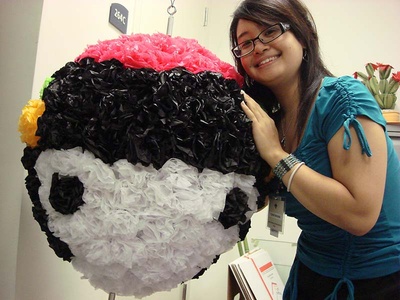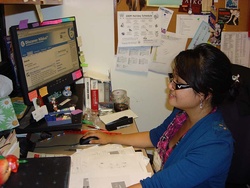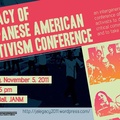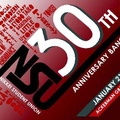When I first applied for the George and Sakaye Community Internship through the UCLA Asian American Studies Center I felt it important to expand my horizons and further delve into the history and current conditions of the Japanese American community. However, the Japanese American National Museum was a daunting choice. Though many aspects of it caught my interest—housing the Japanese American legacy, making accessible artifacts and works of contemporary artists, passing on the personal accounts of knowledgeable docents—I was apprehensive because I knew so little about Japanese American history. Sadly, I had never even set foot within the museum.
But then, what better place to get a rich, fulfilling experience? I wanted to familiarize myself with the stories of the early Japanese Americans and to trace the subsequent changes within the Nikkei community after the war. In part this was due to becoming an active member of my university’s Nikkei Student Union, and recently being elected as a member of its executive board: I felt it my duty to know more about the Nikkei culture to impart with the incoming and current members. But to a greater extent it was to reconnect with my own heritage as a Nikkei and to conceptualize a better idea of what exactly that term means in establishing my identity.
When I first expressed my interest in the Discover Nikkei website, I least expected spending a good portion of my first few weeks making paper flowers. Or taking photos of said flowers. The tanabata decorations were far from what I thought I would be doing for my internship. Yet strangely enough this project well defines my experience here at the museum. It was a tentative step into the vast waters of the Discover Nikkei website, introducing me to writing articles, making Nikkei albums, talking with museum staff and volunteers, and connecting with the greater Nikkei community as a whole.
These experiences were exactly what I was looking forward to: the Discover Nikkei website truly illustrates the innovations of connecting the past to present. Reconnecting with the Japanese heritage, adapting traditions to the present, bringing together communities, meeting new people, and finding creative ways to have raise awareness about one’s culture. As an East Asian Studies major I did not make a connection between my field of study with that of Asian American Studies. But soon I tried to find the similarities in order to better understand the differences. On such a global scale, the stories submitted by Nima shed light on their unique commentary on the dynamic Nikkei culture, their personal struggles with identity, their reflections on the differences among the various generations, and much more. The history of Japan lies not only within its boundaries but also within the people who have chosen to leave their homeland in search of a new life. Furthermore, the conditions under which they emigrated reflect the consequences of the growing changes within the nation. The diversity of the Nikkei Communities is apparent not only through the number of countries to which these Japanese immigrants have emigrated to, but also the various identities formed outside of Japan’s border. With the growing trend among historians to provide a more socio-cultural history, it is important to see the significance of these articles. Not only do they record the past, but also through the eyes of our contemporaries do we see the change over time that they have seen. The subtle changes that occur through the choices of everyday people are powerful enough to form new traditions and a greater understanding of oneself. I believe the foundations of a community lie within its people, and the economic and historical context in which they develop express the value of the culture they seek to preserve and adapt to present customs.
In reading such personal accounts and coming into contact with so many passionate individuals involved in the Japanese American community I spent a lot of time reflecting upon my identity as a Japanese American. My history classes only mentioned Japanese Americans briefly in passing when we discussed Executive Order 9066, the order that allowed for the incarceration of Japanese Americans. But through Discover Nikkei the stories of those who were interned at Manzanar and other camps are much more widely disseminated, and the desire to bridge the generations that is evident among the Yonsei (fourth generation) shows a growing trend. In bringing forth stories such as these, Discover Nikkei makes available the personal accounts of the Nikkei legacy not only in the United States, but also the struggles and development of ethnic minorities throughout the world. Upon taking my first guided tour at the museum with Roy Sakamoto, a docent, I was astounded by some of the racism that he had experienced as a youth, only a few generations before mine. Though I heard a few accounts during my first pilgrimage at Manzanar this past year, by listening to Roy’s stories about the harsh reality of the camps, the number by which his grandmother was referred, and his father’s pride in making his own business to be free from the whims of those who discriminated against Japanese Americans made me think about the impact it has had upon Nikkei today. For some Nikkei, they felt shame for the Pearl Harbor incident, though they had no direct connection with that terrible day. So great was the humility they felt that they tried to reject their own heritage—they want to be seen as Americans, loyal to their nation, a entity separate from the people of their parents’ homeland. I too, faced the enmity of those who could not break free of the past, and I did push away the Japanese side of myself. But it not something to escape and it was in my own ignorance that I did not see that my Japanese heritage is an intrinsic, and integral, part of my identity.
In the search for identity we all struggle to define who we are as individuals and who we are in the larger scheme of ethnicities, as people—as the making of a nation. But, I think we are far from attaining a static, all-encompassing answer. And I’m not quite certain I would want one. I still don’t know what the term Nikkei really means but I do know it is neither stagnant nor dying. It is a flourishing community that extends beyond those who are descendants of the Japanese immigrants, and worldwide it is a thriving lifestyle enriched by the parallel cultures it grows alongside.
Before Discover Nikkei I had never been able to encounter so much information about the Japanese American/Nikkei experience in such a concentrated area. The Nikkei community is constantly changing, and as time passes stories are lost, or are never even recorded. Each person’s story adds more and more to the history and culture; but it is difficult to get everyone’s stories—manpower and knowledge of getting each person’s story is a massive task. But a “people’s history” is what makes it easier to relate to and that personal touch makes Discover Nikkei more than just a resource of history: it is a place of interaction and dialogue housing an electronic history and commentary. It can serve as a powerful tool for students of Asian American history, Nikkei searching for their identities, those who want to share a heart-moving story, and a place to express their interests in the Nikkei culture.
Experience. Share. Connect. After my first week interning for Japanese American National Museum I felt these words encompassed not only the Discover Nikkei community, but also that of the museum; even the Nikkei experience as a whole. And these words have never failed to disappoint me.
© 2009 Yoshimi Kawashima








